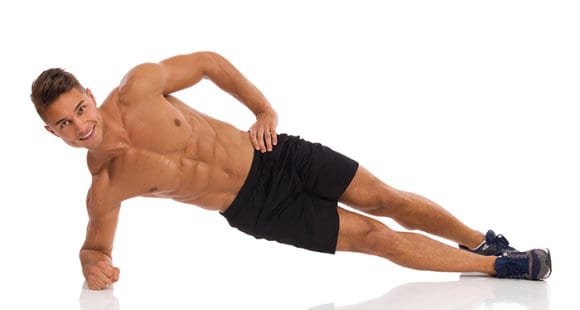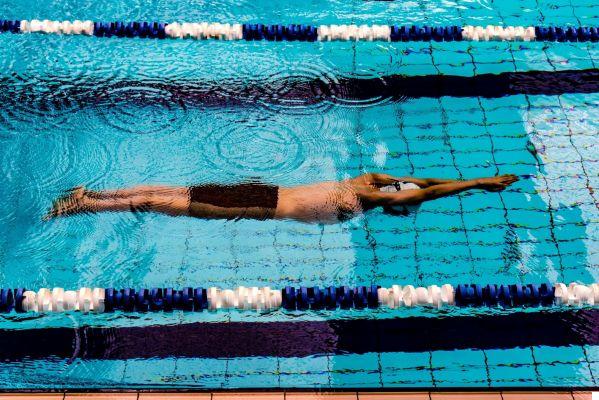By healthiergang writer , swimming instructor and student in sports science.
Physique From Swimmer
During the last Rio 2016 Olympics, many of you will have attended the swimming competitions that we were so passionate about. Surely many of you have been fascinated by the statuesque physiques of swimmers, both men and women. You may have wondered: how do you get a physique of that type?
A professional swimmer, for whom sport is his everyday job, spends hours and hours in the pool training hard, as well as in the gym during dry preparation. The muscular, toned and well-defined physique is the natural consequence of commitment and perseverance.
For all of us who are not professional swimmers, who go to the pool 2 or 3 times a week, who may not have much time available and we have to jump through hoops to insert our training session between work and family commitments, a result of that type seems almost unapproachable.
Well, that's not quite the case. Good news, right?
The only difference is that it will take us longer to achieve the desired result, because the work will be more diluted over time and we will therefore have to use all our patience, determination and perseverance. Only in this way will we achieve our goal.
Now let's see how to do it.
Observing a swimmer, what immediately catches our eye? The broad shoulders, the slender hips, shapely legs and tapered, firm buttocks e toned arms.
Training to get it
- Upper body
The upper body (shoulders, arms, chest and back) is trained hard while performing the 4 styles.
Lo freestyle uses the great dorsal muscle as a propeller, together with triceps and in the background arms and shoulders.
Il dorsal it develops more the deltoids (especially the posterior bundle) together with the great dorsal.
La rana sees the main role of the pectorals (large and small) together with the anterior deltoid and triceps (always involved in the final propulsion phase).
Finally the Delfino, the most “spectacular” style of the four, involves the lats, shoulders, triceps and pecs.
It is therefore essential to tone the muscles of the upper body, both anterior and posterior. If you go to the gym and want to do some work aimed at swimming, you need to focus on triceps (pushes down to the pulley, for example, with the elbows added to the trunk), tractions for the grand dorsal or lat machines, side and front lifts with the shoulder weights or push ups, push ups and plank.
- Abdomen and Core
The core is essential in swimming. Abdominals (rectus abdominis, oblique, superficial and deep) and lumbar (paravertebral and square of the loins) are the muscles that support the trunk and stabilize it, allowing effective limb movements.
This is true on land, in water it is even more important as the buoyancy and the absence of "firm" grips force us to use our body to its fullest potential.

Therefore the core is trained together with the upper and lower limbs at any time when we are swimming: if our body does not maintain an excellent waterline parallel to the surface of the water, the whole economy and effectiveness of our gesture will be affected.
To train this part of the body in the best possible way, it is necessary to concentrate on a position as parallel as possible to the surface (the so-called “streamline”) while performing freestyle and backstroke. The abdominal muscle must always be activated and in tension.
The main dry exercises are crunches (of which there are many variations), the plank (fundamental exercise for any sport), the reverse crunch, the reverse plank, hyperextensions and “superman” for strong lumbar and paravertebral muscles.
- Arti
Strong and propulsive arms, a toned and solid core they are complemented by the action of the legs and buttocks. The front and rear leg muscles are the largest in humans and the ones that consume the most oxygen during exercise.
In general, the “legs only” works are a bit difficult for all swimmers of all levels precisely because they are more tiring. Freestyle kick and back (similar to a "scissor kick"), frog legs and dolphin legs actively engage muscles, joints and even the lumbar muscles.
The movement of freestyle legs and back must be continuous and without pauses (in competitive swimming, the situation is different for bottom swimming where it is possible to perform the "stabilizing" kick performed in compensation to the roll of the arms) starting the kick of the legs from the hip and transmitting the propulsive energy as a wave up to the tip of the foot.

La gambata a rana it involves much more the femoral muscles together with the buttocks. The kick is loaded by bringing the heels closer to the buttocks, bending the knees with the toes pointing outwards. A rapid and explosive movement is performed that extends the legs together, bringing the ankles closer: it is as if you were squeezing the water between your ankles.
The dolphin kick also involves the whole abdomen and has a wave motion.
The lower limbs are involved in swimming and act as a propulsive "engine" in addition to the work of the arms. When dry, the most effective exercises are squats, lunges, deadlifts with barbells or dumbbells, jump squats, burpees, and even some running sessions.
We favor work with natural load or with barbells / dumbbells / kettlebells compared to the most popular gym machines as we will be able to train not only the single isolated muscle district (eg the quadriceps to the leg extension) but all the muscle chains, benefiting from a "total workout" work with a few exercises. Ideal for those who are always "hungry" for time to devote to sport.
Conclusions
With this analysis of the muscles involved in the various swimming styles, it is clear that all muscles in the body are involved in training. Propeller and stabilizer, each of them has an active role and contribute - in the medium and long term - to shape our body making it toned, slender and tapered.
In addition to the mere physical, external appearance, the development of muscles is a direct consequence of a very effective cardiovascular and cardiorespiratory training. Our body, which is in itself a perfect machine, will benefit from constant exercise, maintained over time with determination and patience.
Have fun and good swimming pools for everyone!


























